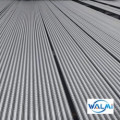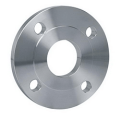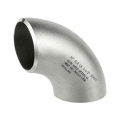The Backbone of Efficient Heat Exchange: Stainless Steel Heat Exchanger Tubes
In the realm of industrial equipment, heat exchangers play a pivotal role in ensuring efficient thermal management. At the heart of these sophisticated devices lie stainless steel heat exchanger tubes, renowned for their durability, corrosion resistance, and superior thermal properties. Let’s delve into the world of these indispensable components and explore why they are the material of choice across diverse industries.
Uncompromising Durability and Strength
Stainless steel, particularly grades like 304 and 316, is synonymous with strength and longevity. Heat exchanger tubes manufactured from this material exhibit exceptional resistance to high pressures and extreme temperatures. This makes them ideal for demanding industrial applications where reliability is non-negotiable. The inherent toughness of stainless steel ensures that the tubes can withstand harsh operating conditions without succumbing to wear and tear, thereby extending the lifespan of the heat exchanger itself.
Superior Corrosion Resistance
One of the most significant advantages of stainless steel heat exchanger tubes is their remarkable resistance to corrosion. Industries such as chemical processing, petrochemicals, and marine applications often deal with corrosive environments. Stainless steel’s passive chromium oxide layer acts as a protective shield, preventing rust and other forms of corrosion. This property not only ensures the structural integrity of the tubes but also maintains the purity of the substances being processed, which is crucial in sectors like food and pharmaceuticals.
Optimal Thermal Conductivity
Efficient heat transfer is the primary function of any heat exchanger. Stainless steel tubes are excellent conductors of heat, facilitating rapid and uniform thermal exchange. This efficiency translates to reduced energy consumption and lower operational costs. Whether used in shell and tube heat exchangers or other configurations, stainless steel tubes ensure that thermal energy is effectively transferred between fluids, maintaining optimal process temperatures.
Versatility and Adaptability
Stainless steel heat exchanger tubes are incredibly versatile, catering to a wide range of applications. From HVAC systems and power plants to automotive and aerospace industries, these tubes are engineered to meet specific requirements. They can be manufactured in various diameters, thicknesses, and lengths, allowing for customization based on the heat exchanger’s design and operational demands. Additionally, advancements in metallurgy have led to the development of specialized stainless steel alloys that offer enhanced properties, such as improved weldability and formability.
Ease of Maintenance and Cleanliness
Maintaining hygiene and cleanliness is paramount in industries like food processing, dairy, and pharmaceuticals. Stainless steel’s non-porous surface inhibits bacterial growth and makes cleaning a breeze. The tubes can be easily sanitized, ensuring compliance with stringent hygiene standards. Furthermore, the smooth interior surface of the tubes minimizes fouling, which is the accumulation of unwanted materials on heat transfer surfaces. This reduces the frequency of maintenance shutdowns and enhances overall system efficiency.
Environmental and Economic Benefits
Choosing stainless steel heat exchanger tubes is not only a wise technical decision but also an environmentally conscious one. Stainless steel is 100% recyclable, and its long service life reduces the need for frequent replacements, thereby minimizing waste. Economically, while the initial investment may be higher compared to other materials, the long-term savings in maintenance, energy, and replacement costs make stainless steel tubes a cost-effective solution.
In conclusion, stainless steel heat exchanger tubes are the cornerstone of efficient and reliable heat exchange systems. Their unmatched durability, corrosion resistance, thermal conductivity, and versatility make them the preferred choice across numerous industries. As technology continues to evolve, stainless steel will undoubtedly remain at the forefront, driving innovations in heat exchanger design and performance. Whether you’re in the market for new heat exchangers or upgrading existing systems, investing in stainless steel tubes is a decision that promises long-term benefits and peace of mind.







